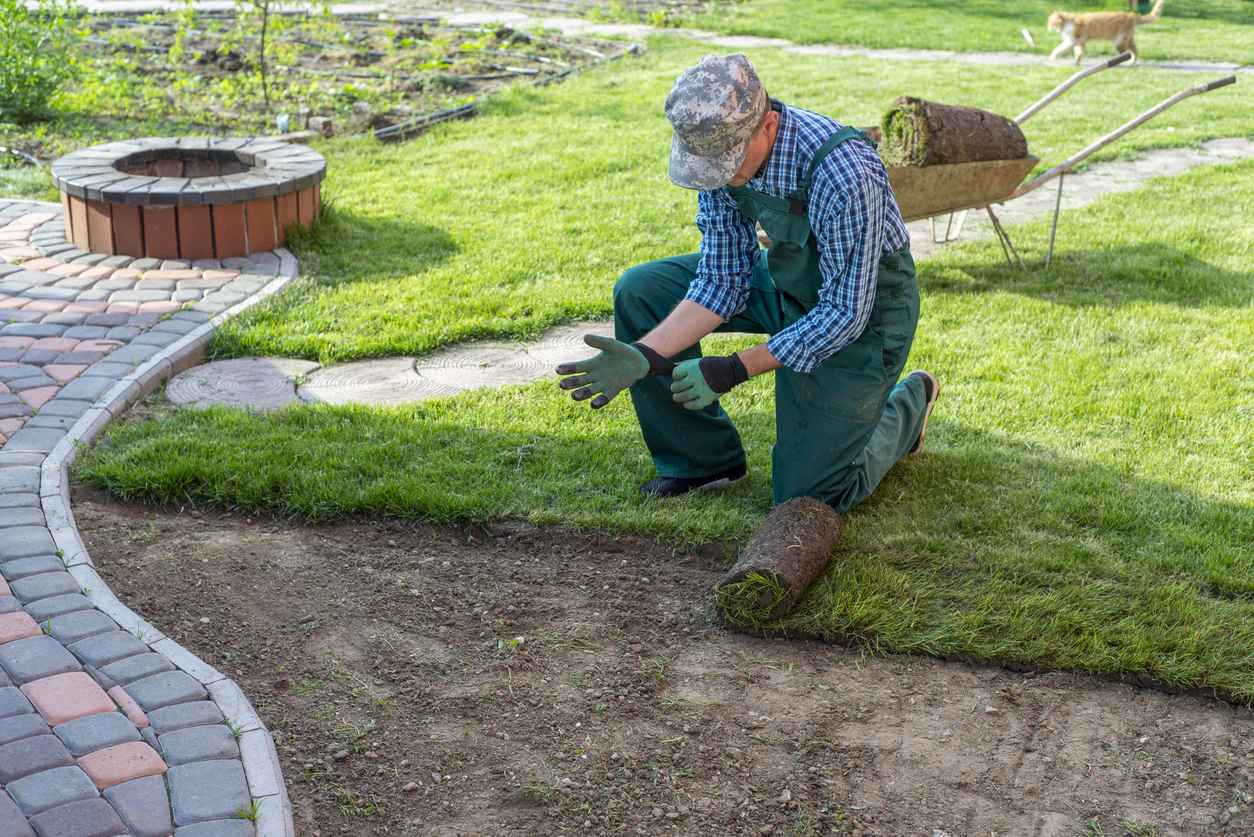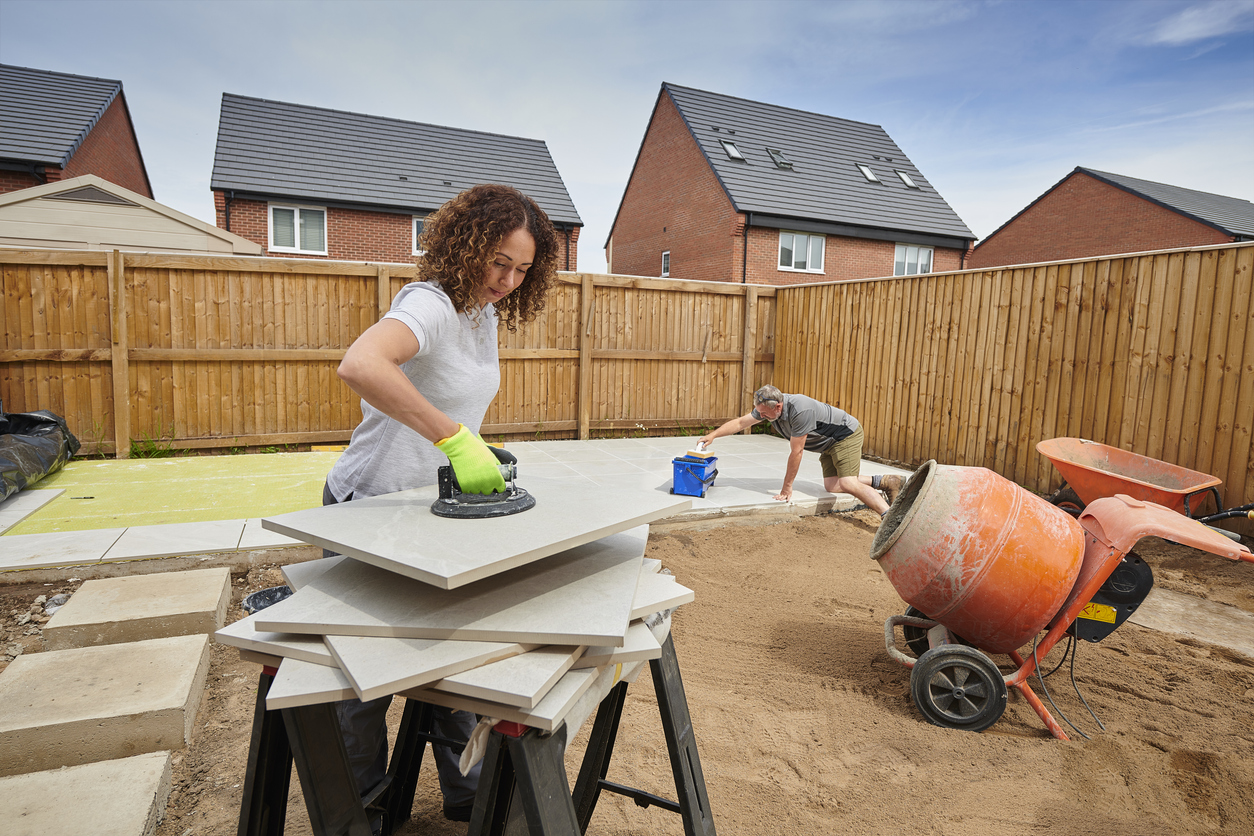
Key takeaways:
- Outdoor projects can increase the enjoyment and functionality of your home – and, often, its value.
- Take time to plan and prioritize your projects based on your lifestyle and needs, not everyone else’s.
- There are several options for financing major outdoor projects. Home equity can be a good source of funds, through loans or a no-loan home equity agreement.
’Tis the season to tackle those landscaping projects. While early spring is a good time for planting and fertilizing, late summer and early fall are far better times for these activities in many parts of the country. If your projects include some construction work – such as on a deck or patio – you may find the autumn climate much more hospitable, too. This is the perfect time to plan your projects – and how you’ll pay for them.
Updating and upscaling your outdoor space can make your life at home more enjoyable and functional. An attractive landscape can also easily add 10% to 12% value to a home. But these projects can be expensive. Take time to plan carefully, research and budget for the costs, and determine just how you’ll pay for it before you start digging in.
Prioritize your projects
If you’re like many homeowners, you could easily come up with a long wish list of outdoor improvements and enhancements. To help you organize and prioritize, consider these six factors.
- Start with the basics. Make sure your lawn and gardens are healthy and well-maintained. Weed, trim bushes and hedges, clear away brush and dead plants, maintain flower beds and keep the sprinkler system in working order. These are the least expensive landscaping projects to do, and the ones that can reap the greatest return.
- Think about your lifestyle. Just because your neighbors are installing a pool, or a fancy new deck doesn’t mean you need to do the same. How do you want to use your outdoor space? What direction do usable spaces face? How much of the year can you realistically use them? Is gardening – flowers, vegetables, fruits – a priority for you? Do you have kids or pets looking for a place to play? Do you entertain often? Are you seeking privacy?
- Look into adding or updating a patio or deck. These are generally the core outdoor spaces for most homeowners, and the ones that get the most use. Decide if you’d like to use yours for relaxing, entertaining, a kids’ play area or even working.
- Consider heating and cooking elements. A “fire feature” – whether a simple fire pit or elaborate stone fireplace – on a patio is popular with many homeowners. Similarly, many homeowners are installing outdoor cooking facilities, ranging from a grill to an entire kitchen. Again, consider your lifestyle and how much you would use a feature like this. For instance, if you live in Minnesota and have a north-facing patio, chances are good that you may be able to enjoy it only a few months a year. That may still be worth it to you, but it illustrates the importance of evaluating your options carefully.
- Check your HOA rules. If you live in an area with a homeowners’ association, you may have rules to follow on what type of outdoor projects you can do, and an approval process to follow. Be sure to check the procedures before you get too far into the planning phase.
- Understand return on investment. Adding value to your home is different from recouping the investment you make in the project. Few projects provide a 100% return on investment. So, for example, you may spend $20,000 on a new deck. You may enjoy the deck for years, but the value of your home will not increase $20,000.
Remodeling Magazine, the National Association of Realtors and other organizations provide estimates on the return for different projects. Remember they are estimates at best and will vary considerably with the specifics of the project, the size and materials used, the location, the neighborhood, the housing market and overall economy. If you are undertaking a landscaping project – major or minor – be clear about your reasons for doing so.
Budget for your landscaping project
Once you have an idea of what you’d like to do, you’ll need to research costs. Depending on your project(s), you may need to work with a landscape designer, architect, contractor and/or engineer in the planning process. If your project is small, or you believe you have the skills and time to handle a larger project, you may be able to do it yourself. In other cases, homeowners may opt to do some of the work themselves and leave some to a professional. If you’re installing a new deck, for example, you might be able to tear out the old deck and do the staining and finishing work on the new deck – but have a contractor handle the actual building and electrical components (if applicable).
For projects you plan to do yourself, you’ll need to itemize the project steps and materials, then research the costs. Some home improvement or garden centers can be helpful in this process.
Realize that planning and budgeting is a back-and-forth process. Once you list all your costs, or talk with a contractor and receive an estimate, you may find that the cost is higher than you expected. You’ll then need to return to the planning process to revise the project scope.
Pay for your landscaping project
If you are going to undertake landscaping projects that will cost more than your regular monthly budget can absorb, you’ll need to evaluate how to pay for the projects. There are several options.
- Savings. Ideally, you will plan ahead, understand the costs and then save up each month. For smaller projects you hope to do later this summer or in the fall, you may still have time to create dedicated savings.
- Personal loan. Paying for home improvements, including landscaping projects, is one of the most popular uses for personal loan funds. Banks, credit unions and independent lenders all offer personal loans, typically up to $50,000, although some have higher limits. You will need to repay the money you borrow over a set time, usually between 24 and 60 months, with interest. In addition, most lenders charge origination fees of about 2% to 7% of the amount borrowed. There also may be late fees and prepayment fees (should you choose to pay off the loan early). Each lender is different, so it’s important to understand all costs before making a decision.
Qualification for a personal loan is based on your credit profile. In general, the higher your credit score, the lower the interest rate you’ll receive. Lenders also will look at your debt-to-income ratio to help assess how well you manage debts.
- Home equity loan (HEL) or home equity line of credit (HELOC). Using home equity to fund landscaping projects can be a good way to finance landscaping projects. An HEL and a HELOC, as their names state, are loans. With an HEL, you’ll receive the total amount you borrow up front. This loan has a fixed interest rate that will not change over the entire term, so your monthly payments will not change.
In contrast, a HELOC lets you draw money as you need, up to the limit the lender has set. Interest is typically variable, although some fixed-rate HELOCs are available. You’ll pay interest on the amount drawn.
With both an HEL and a HELOC, you can usually borrow 80-85% of your home’s value, less what you owe on it. Both use your home as collateral, so if you miss payments, you risk foreclosure and losing your home.
- Home equity agreement (HEA). The HEA has the advantage of letting you access your home equity without taking out a loan. Qualification is much easier than with loan options, income requirements are flexible, and there are no associated monthly payments and no interest rates to worry about. With an HEA, you’ll receive cash up front in exchange for a portion of the future value of your home. With Unlock’s HEA, you can buy back your equity at any time during the 10-year agreement term. For many people, that happens when they sell their home.
- Home improvement loan. Some lenders may market “home improvement loans,” but in almost all cases, they are simply personal loans. Some larger contracting businesses are now also offering “home improvement loans” to prospective customers. These large firms generally work with third parties – lenders – that offer unsecured personal loans. The contractor maintains a relationship with the lender to refer customers. Borrowers still must qualify as they would with a personal loan, as explained above.
One financing option to avoid is the credit card. With average interest rates in the double digits, it is almost always the most expensive way to finance a landscaping project.
Plan, prioritize, budget, finance
Detailed planning is vital for accurately estimating any landscaping project. When you’ve decided on your priorities and budget, carefully evaluate your financing options. If using your home equity without taking out a loan is of interest, consider an Unlock HEA and see how much equity you could access.
The blog articles published by Unlock Technologies are available for general informational purposes only. They are not legal or financial advice, and should not be used as a substitute for legal or financial advice from a licensed attorney, tax, or financial professional. Unlock does not endorse and is not responsible for any content, links, privacy policy, or security policy of any linked third-party websites.”


